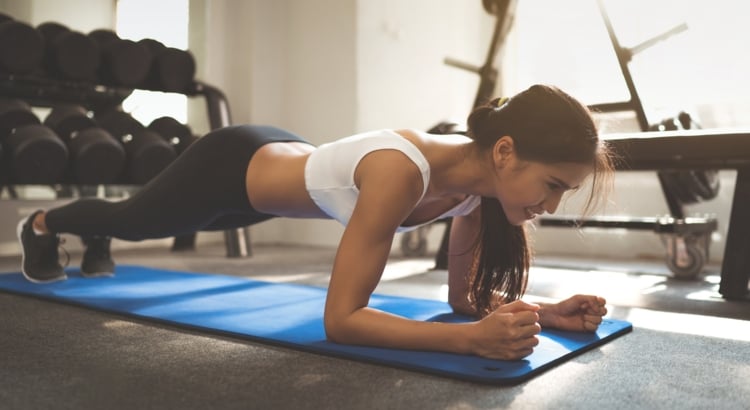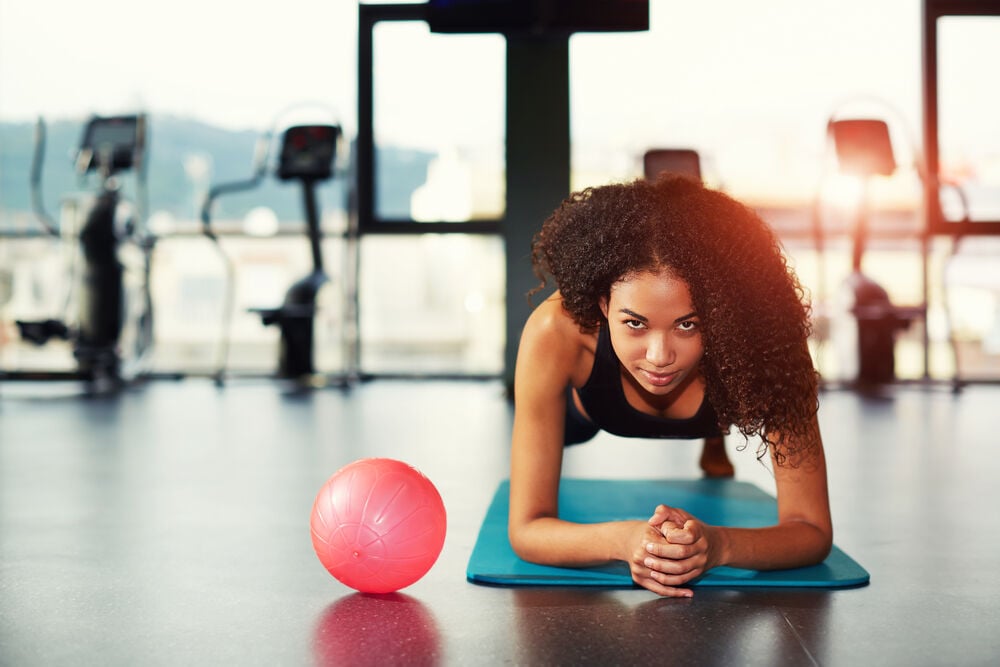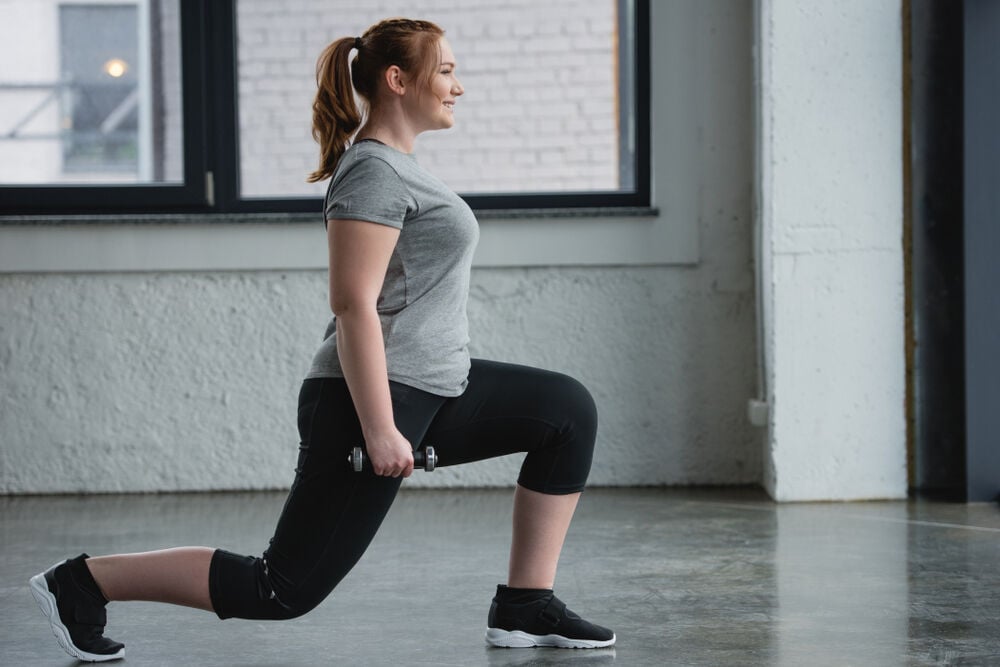Exercising while on your period might seem like a counterintuitive thing to do, but it can help alleviate menstrual symptoms. There are, however, some limitations to be aware of.
-
Tracking cycle
-
Getting pregnant
-
Pregnancy
-
Help Center
-
Flo for Partners
-
Anonymous Mode
-
Flo app reviews
-
Flo Premium New
-
Secret Chats New
-
Symptom Checker New
-
Your cycle
-
Health 360°
-
Getting pregnant
-
Pregnancy
-
Being a mom
-
LGBTQ+
-
Quizzes
-
Ovulation calculator
-
hCG calculator
-
Pregnancy test calculator
-
Menstrual cycle calculator
-
Period calculator
-
Implantation calculator
-
Pregnancy weeks to months calculator
-
Pregnancy due date calculator
-
IVF and FET due date calculator
-
Due date calculator by ultrasound
-
Medical Affairs
-
Science & Research
-
Pass It On Project New
-
Privacy Portal
-
Press Center
-
Flo Accuracy
-
Careers
-
Contact Us
Exercising During Your Period: Benefits and Things to Avoid


Every piece of content at Flo Health adheres to the highest editorial standards for language, style, and medical accuracy. To learn what we do to deliver the best health and lifestyle insights to you, check out our content review principles.
Exercise can help promote a healthy lifestyle for most people. This can be especially important when it comes to hormonal balance. Some exercises and techniques can be beneficial during your period, and others should be avoided during this time. The following article provides information about the dos and don’ts of exercising during your period.
Benefits of exercising during your period
Exercise is often the last thing anyone wants to do when they’re on their period, and there are various myths about exercise in general. But doing some light exercise on your period has been proven to alleviate many symptoms such as:
- Pain
- Cramps
- Bloating
- Depression
- Mood swings
- Irritability
- Fatigue
- Nausea
These are just a few of the benefits you could experience while exercising during your period. In addition, general physical fitness is important for health and can reduce the risk of serious medical issues such as heart attack, stroke, arthritis, osteoporosis, and diabetes. Exercise doesn’t need to be strenuous nor happen every day to help. A recent study found that exercise can help with at least 30 chronic diseases.
There are physical and chemical changes that occur in the body during menstruation that can be alleviated through exercise. In fact, exercise can increase the production of endorphins (“feel-good hormones”) and reduce anxiety, depression, and pain, improving your mood.

Take a quiz
Find out what you can do with our Health Assistant
Best exercises to do on your period
Most people would suggest that during your period, it’s better to do the exercises you can tolerate, that are good for your body, and that you like to do. For many people, the first day or two of their period may be not the best time to exercise. This is typically due to a heavier flow. During this time, you may feel more comfortable exercising at home. If the first few days of your periods are difficult, take it easy and make modifications to your workouts as needed.
So, what are the best exercises to do on your period? Here are a few suggestions:
- Walking: This is an easy exercise that doesn’t require any special equipment, clothing, or location. You can take as much time as you have or need, and you can adjust your speed however you want.
- Light cardio or aerobic exercise: This is not meant to be a stressful workout. The key word here is “light.” Whether you’re jogging, cycling, swimming, or anything else, take it easy and/or consider a shorter workout than normal.
- Strength training: If you’re up for it, try some gentle strength exercises and consider lighter weights than you might normally use. Avoid heavy-duty lifting at this time in your cycle.
- Gentle stretching and balancing: Yoga is great for relaxing the muscles and decreasing cramps and pain. Pilates is good for stretching muscles and reducing cramps and pain. Tai chi is good for reducing tension and stress.
Exercising while on your period: Things to avoid
Exercising during your period shouldn’t put additional stress on the body, cause pain, or interfere with the normal process of your cycle. Exercise during your period can be beneficial, but there are certain things to avoid, including the following:
- Strenuous or prolonged exercise might not be good for the body when you are menstruating. This doesn’t mean you have to stop your normal training, but be cautious. One study found that 60 minutes of moderate to intense exercise during menstruation caused exercise-induced inflammation.
- If you feel unusually fatigued, nauseous, or there is an increase in pain or discomfort, stop what you are doing and rest. If these symptoms continue, stop completely. Ignore the saying “no pain, no gain.” Listen to your body.

Period hygiene when exercising
Hygiene during your period is important, including while you’re exercising. Here are a few basic rules. First, choose period products that you’re comfortable with. If you’re concerned about leaks while exercising during your period, then you might choose to use a tampon. However, if you don’t normally use tampons, this is not the time to try them out. They can be distracting or painful if not inserted correctly.
Other period products, like pads, menstrual cups, and discs, work just as well or even better than tampons for some people. You can also combine some of these products to keep your underwear from getting stained. Use whatever works best for you.
It is a good idea to carry period products with you when you exercise just in case your period starts earlier than expected. This can be caused by hormonal fluctuations.
After exercising:
- Take a shower.
- Change your underwear.
- Use a fresh pad or tampon.
- Change into fresh clothing if your workout clothes are sweaty or stained.
Remember, even if you are close to the end of your period, the increased movement, different positions, or stretching during exercise may cause some spotting. This is normal and can usually be managed with panty liners or period products. However, if you experience spotting between periods for unexplained reasons, it is best to consult your health care provider.


Hey, I'm Anique
I started using Flo app to track my period and ovulation because we wanted to have a baby.


The Flo app helped me learn about my body and spot ovulation signs during our conception journey.


I vividly
remember the day
that we switched
Flo into
Pregnancy Mode — it was
such a special
moment.
Real stories, real results
Learn how the Flo app became an amazing cheerleader for us on our conception journey.
References
Börjesson, M., Onerup, A., Lundqvist, S., & Dahlöf, B. (2016). Physical activity and exercise lower blood pressure in individuals with hypertension: narrative review of 27 RCTs. British Journal of Sports Medicine, 50(6), 356-361. doi.org/10.1136/bjsports-2015-095786
Campo, R. A., Light, K. C., O’Connor, K., Nakamura, Y., Lipschitz, D., LaStayo, P. C., ... & Martins, T. B. (2015). Blood pressure, salivary cortisol, and inflammatory cytokine outcomes in senior female cancer survivors enrolled in a tai chi chih randomized controlled trial. Journal of Cancer Survivorship, 9(1), 115-125. doi.org/10.1007/s11764-014-0395-x
Clennell, B. (2016). The Woman's Yoga Book: Asana and Pranayama for All Phases of the Menstrual Cycle. Shambhala Publications. Retrieved from https://books.google.com/books?hl=en&lr=&id=CRrIDAAAQBAJ&oi=fnd&pg=PT8&dq=yoga++poses+to+avoid+menstruation&ots=psp9mDdkYC&sig=3-snAD1TQBxLNXY1QMk5OZ5KctY#v=onepage&q=yoga%20%20poses%20to%20avoid%20menstruation&f=false
Hayashida, H., Shimura, M., Sugama, K., Kanda, K., & Suzuki, K. (2016). Exercise-induced inflammation during different phases of the menstrual cycle. Journal of Physiotherapy and Physical Rehabilitation, 1, 121. DOI: 10.4172/2573-0312.1000121
Lasater, J. H. (2016). Relax and renew: Restful yoga for stressful times. Shambhala Publications. Chapter 12-14. Retrieved from https://books.google.com/books?hl=en&lr=&id=aM3QDAAAQBAJ&oi=fnd&pg=PT11&dq=inversion+yoga+poses+and+menstruation&ots=THV2qvJhAG&sig=4U9_pxCh7ecdnN4-XRcT79rQMFQ#v=onepage&q&f=false
Lehtisalo, J., Lindström, J., Ngandu, T., Kivipelto, M., Ahtiluoto, S., Ilanne-Parikka, P., ... & Luchsinger, J. (2016). Association of long-term dietary fat intake, exercise, and weight with later cognitive function in the Finnish Diabetes Prevention Study. The journal of nutrition, health & aging, 20(2), 146-154. https://doi.org/10.1007/s12603-015-0565-1
Ortiz, M. I., Cortés-Márquez, S. K., Romero-Quezada, L. C., Murguía-Cánovas, G., & Jaramillo-Díaz, A. P. (2015). Effect of a physiotherapy program in women with primary dysmenorrhea. European Journal of Obstetrics & Gynecology and Reproductive Biology, 194, 24-29. doi.org/10.1016/j.ejogrb.2015.08.008
Saanijoki, T., Tuominen, L., Tuulari, J. J., Nummenmaa, L., Arponen, E., Kalliokoski, K., & Hirvonen, J. (2018). Opioid release after high-intensity interval training in healthy human subjects. Neuropsychopharmacology, 43(2), 246. doi.org/10.1038/npp.2017.148
Thornton, J. S., Frémont, P., Khan, K., Poirier, P., Fowles, J., Wells, G. D., & Frankovich, R. J. (2016). Physical activity prescription: a critical opportunity to address a modifiable risk factor for the prevention and management of chronic disease: a position statement by the Canadian Academy of Sport and Exercise Medicine. British Journal of Sports Medicine, bjsports-2016. doi: 10.1136/bjsports-2016-096755




